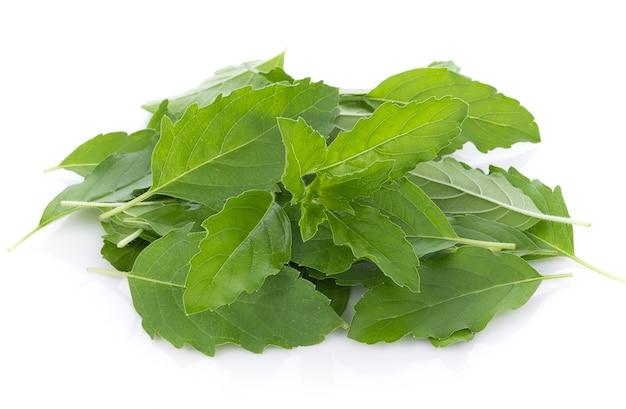Have you ever heard of saluyot? It’s a leafy vegetable that goes by many names, and it has gained popularity in both cooking and herbal medicine. In this blog post, we’ll delve into the world of saluyot, uncovering its various uses and benefits. We’ll also answer your most pressing questions, such as whether saluyot is related to okra or what it tastes like. So, join us on this journey as we unravel the secrets of saluyot and discover why it’s a must-try ingredient.
The Amazing Benefits of Saluyot
Are you tired of eating the same old vegetables? Looking for something new and exciting to add to your plate? Well, look no further because saluyot is here to revolutionize your veggie game! Saluyot, also known as jute or Corchorus olitorius, is a superfood that is gaining popularity for its incredible health benefits and unique taste.
The Powerhouse of Nutrients
Move over kale, because saluyot is about to steal the spotlight! This leafy green is a nutritional powerhouse, packed with essential vitamins and minerals. From vitamin A to vitamin C, iron to calcium, saluyot has got it all. Incorporating this superfood into your diet can help boost your immune system, strengthen your bones, and improve your overall well-being. It’s time to upgrade your greens!
Glowing Skin? Yes, Please!
If you want to achieve that enviable, radiant glow, saluyot should be on your shopping list. This wonder veggie is rich in antioxidants, which help fight off free radicals and protect your skin from damage. Say goodbye to dull and lifeless skin, and hello to a youthful and vibrant complexion. Who needs expensive creams and serums when you have saluyot?
Hello, Digestive Health!
Struggling with digestive issues? Saluyot might just be the answer you’ve been searching for. This fiber-rich vegetable is known for its excellent digestive properties. It can help regulate bowel movements, prevent constipation, and improve overall gut health. Say goodbye to bloating and discomfort, and hello to a happy and healthy tummy. Your digestive system will thank you!
Weight Loss Wonder
Losing weight doesn’t have to be a never-ending battle. Saluyot is a dieter’s dream come true! With its low calorie and high fiber content, this superfood can keep you feeling fuller for longer, aiding in weight management. So skip the fad diets and trendy weight loss products. Just incorporate saluyot into your meals and watch those pounds melt away.
A Delicious Addition to Your Plate
Now you might be wondering, “Okay, saluyot sounds amazing, but what does it taste like?” Well, let me tell you, saluyot has a unique flavor that is hard to resist. This leafy green has a slightly nutty and earthy taste with a hint of sweetness. It pairs well with a variety of dishes, from soups to stir-fries. Get creative in the kitchen and let saluyot take the spotlight in your next culinary masterpiece.
Incorporating Saluyot Into Your Diet
If you’re now convinced to give saluyot a try, kudos to you for making a wise decision! You can easily find saluyot in Asian grocery stores or even grow it in your own backyard. This versatile vegetable can be cooked in various ways, such as sautéing, steaming, or boiling. Add it to salads, stews, or use it as a leafy green wrap. The possibilities are endless!
Saluyot may not be the most well-known vegetable, but it definitely deserves a spot in your diet. From its nutritional benefits to its delicious taste, this leafy green is a must-try. So, why not add a little saluyot to your plate and let it work its magic? Your body will thank you for it!
Is Saluyot Okra
Saluyot or Okra – Let’s Settle the Debate Once and for All!
If you’re into leafy green vegetables or just an adventurous foodie, chances are you’ve come across the name “saluyot” or “okra” at some point. But what exactly is the difference between these two popular greens? Are they the same thing? Well, fear not, dear reader, as we delve into this culinary conundrum and unravel the mystery behind saluyot and okra.
What is Saluyot Anyway
Ah, saluyot – a leafy green that has been long cherished in various cuisines around the world. Its somewhat slimy texture and slightly bitter taste might not appeal to everyone at first, but those who dare to try it often fall in love with its unique flavor profile. Often referred to as Egyptian spinach or molokhia, saluyot is packed with nutrients like iron, antioxidants, and vitamins A and C. It’s a superfood in its own right!
Okra: Saluyot’s Green Cousin
Now, let’s meet the other contender in our vegetable battle – okra. It’s no secret that okra has gained quite a following in the culinary world, especially in Southern cuisine. With its distinctively slimy texture, okra often finds its way into stews, gumbos, and even pickles. But what sets it apart from saluyot? Well, my friend, the difference lies in their botanical ancestry.
Saluyot = Old World Charm
Saluyot, scientifically known as Corchorus olitorius, belongs to the mallow family, hailing from the warm and sunny regions of Africa and Asia. With its elongated, serrated leaves, saluyot has a charm that has enthralled cultures across the globe for centuries.
Okra = Southern Sensation
On the other hand, okra, scientifically known as Abelmoschus esculentus, is a member of the mallow family as well but embraces its American roots. This green gem originated in West Africa but found its true calling in the Southern United States, where it became a culinary diva, sizzling in pots of gumbo and winning hearts with its rich flavor.
Differences and Similarities: Unveiling the Truth
Now that we know the botanical background of these greens, let’s explore their similarities and differences:
Appearance
Saluyot boasts elongated leaves with serrated edges, while okra flaunts shorter, club-shaped green pods that you can easily slice and dice.
Texture
Both saluyot and okra share a somewhat slimy texture when cooked, but don’t let that scare you off. Embrace the slime and let your taste buds dance with delight!
Flavor Profile
Saluyot has a slightly bitter taste that mellows once cooked. In contrast, okra offers a mild and slightly grassy flavor, which can become more pronounced when fried or used in stews.
So, my dear readers, the verdict is in – saluyot and okra are not the same, but they do share similarities in their taste, texture, and culinary uses. Saluyot brings an exotic touch to dishes, while okra shines in the Southern comfort foods we adore. Whichever one you choose to embrace in your cooking adventures, remember to savor the flavors, explore new recipes, and keep your taste buds entertained. Cheers to the wonderful world of leafy greens!
How to Make Saluyot Tea
To make a refreshing cup of saluyot tea, you’ll need the following ingredients:
- 1 tablespoon of dried jute leaves (saluyot)
- 2 cups of water
- Honey or sweetener of your choice (optional)
- A pinch of creativity (don’t skip this ingredient!)
Step 2: Boil and Brew
-
Fill a pot with 2 cups of water, and bring it to a boil. Don’t get too distracted by the magical bubbling; you need to focus!
-
Once the water is reaching its boiling point, add in the dried jute leaves. Imagine them as little green superheroes diving into the pot, ready to infuse their power into your tea.
-
Reduce the heat to a simmer and let the saluyot leaves work their magic for about 5 minutes. This will give them enough time to release their nutrients and flavors into the water.
Step 3: Strain and Sweeten (If You Desire)
-
Now, it’s time to separate our superhero leaves from the liquid. Place a strainer over your favorite mug or tea cup, and carefully pour the tea through it. Watch as the vibrant green tea cascades into your cup, ready to dazzle your taste buds.
-
If you have a sweet tooth, feel free to add a drizzle of honey or any sweetener of your choice. You can even add a sprinkle of love if you’re feeling extra fancy. Just remember, less is more. We want to enhance the natural flavors, not overpower them.
Step 4: Sip, Savor, and Celebrate!
-
Take a moment to appreciate your masterpiece. Hold the cup close to your face, and let the aroma of the saluyot tea fill your senses. Inhale deeply and feel the worries of the day wash away.
-
Now, take a small sip, letting the warm liquid dance on your taste buds. Notice how the earthy and slightly nutty flavors of the saluyot intertwine with the soothing sensation of the tea. It’s like a sip of tranquility in a chaotic world.
-
You did it! You’ve successfully brewed a cup of saluyot tea. Take a moment to celebrate your accomplishment because you deserve it. Share your newfound knowledge with friends and family, or keep it as your secret weapon for moments of relaxation.
-
Remember, brewing saluyot tea isn’t just about following steps; it’s about embracing the calming ritual it offers. So, next time life gets a little overwhelming, grab some saluyot leaves and let the magic unfold in your teacup.
Pro tip: Don’t be afraid to experiment with other herbs or spices to add an extra kick to your saluyot tea. Whether it’s a hint of mint or a sprinkle of cinnamon, let your creativity run wild. Life is too short for boring tea!
What does Saluyot taste like
Saluyot, also known as jute or Egyptian spinach, is a versatile leafy green that is commonly used in many Asian and African cuisines. So, what does saluyot taste like? Let’s dive right in and explore this unique and flavorful green!
A Mild, Earthy Flavor
Saluyot has a mild, earthy flavor that is often described as slightly nutty with a touch of bitterness. This distinct taste sets it apart from other greens like spinach or kale. When cooked, saluyot leaves become tender and develop a delightful texture while retaining their earthy essence.
A Surprising Hint of Sweetness
Although saluyot is not overly sweet, it does have a subtle hint of sweetness that can surprise your taste buds. This intriguing combination of mild bitterness and underlying sweetness adds depth to the overall flavor profile of saluyot.
A Vegetable with a Slight Slimy Texture
One unique characteristic of saluyot is its ability to produce a slimy texture when cooked. Now, before you get turned off by the idea of slimy greens, let’s put it into perspective. The sliminess is not overwhelming or off-putting; instead, it contributes to the overall mouthfeel and adds a pleasant silkiness to the dish.
A Culinary Chameleon
Saluyot’s versatility in cooking is truly remarkable. Due to its mild flavor, it easily absorbs the taste of the ingredients it is cooked with. It acts as a culinary chameleon, effortlessly adapting to various cooking methods and flavor profiles. Whether it’s stir-fried, sautéed, or added to soups and stews, saluyot’s adaptable nature makes it a fantastic addition to a wide range of dishes.
Nutritional Benefits Galore
Not only is saluyot flavorful, but it also boasts an impressive array of nutritional benefits. Packed with vitamins A, C, E, and K, as well as minerals like iron, calcium, and potassium, saluyot is a nutritional powerhouse that can contribute to a well-balanced diet. It is also a great source of fiber, which aids in digestion and overall gut health.
So, How Should You Enjoy Saluyot
Now that you know what saluyot tastes like and the benefits it offers, you’re probably wondering how to incorporate it into your meals. Here are a few ideas to get you started:
1. Stir-Fry Sensation
Give your stir-fries a healthy twist by adding chopped saluyot leaves. Its mild flavor pairs well with garlic, ginger, and soy sauce, creating a tasty and nutritious side dish.
2. Soups and Stews
Adding saluyot to soups and stews not only enhances the flavor but also increases the nutritional value of your meal. Throw in some saluyot leaves towards the end of cooking to enjoy their unique taste and texture.
3. Boiled or Steamed
For a simple yet delicious preparation, boil or steam the saluyot leaves until tender. Season them with a squeeze of lemon juice, a drizzle of olive oil, and a sprinkle of sea salt for a refreshing side dish.
4. Salads with a Twist
Add a twist to your salads by tossing in some fresh saluyot leaves. Its slightly bitter and nutty flavor complements a variety of dressings, providing a unique and nutritious element to your salad bowl.
So, the next time you come across saluyot in your local market or grocery store, give it a try! Its mild, earthy flavor, slight hint of sweetness, and versatile nature make it an exciting addition to your culinary adventures. Embrace the slimy texture, appreciate the taste, and explore the world of saluyot with a sense of culinary curiosity!
Saluyot: A Natural Remedy for Uric Acid
Uric acid, the pesky compound responsible for causing painful conditions like gout, is no laughing matter. It’s created when the body breaks down purines, which are found in certain foods and drinks. When levels of uric acid become too high, sharp crystals can form in the joints, leading to inflammation, swelling, and excruciating discomfort.
Saluyot: A Surprising Solution
While you may be more familiar with saluyot as a popular vegetable in Filipino cuisine, its potential as a remedy for uric acid might come as a pleasant surprise. Saluyot, also known as jute or Corchorus olitorius, is packed with essential nutrients and boasts a myriad of health benefits.
The Science Behind It
Saluyot leaves have been shown to possess antioxidant and anti-inflammatory properties, which are key in alleviating the symptoms of uric acid-related conditions. These powerful properties work to neutralize harmful free radicals and reduce inflammation in the body, providing much-needed relief to those suffering from gout or high uric acid levels.
Say Goodbye to Gout
Including saluyot in your diet can help regulate uric acid levels and prevent painful flare-ups of gout. Its high fiber content aids in efficient digestion, eliminating purines from the body before they have a chance to wreak havoc. Additionally, saluyot contains vitamins and minerals like vitamin C, iron, and potassium, which promote overall joint health and reduce the risk of uric acid crystal formation.
A Bitter-Sweet Solution
While saluyot holds great promise as a natural remedy for uric acid, it’s important to note that its taste can be an acquired one. The leaves have a slightly bitter flavor, which may not appeal to everyone’s palate. Fear not, though, for there are numerous creative ways to incorporate saluyot into your meals without sacrificing taste or enjoyment!
Get Creative with Saluyot
Start small by adding chopped saluyot leaves to soups or stews for an extra boost of nutrition. You can also steam or sauté them and mix them into your favorite salads or stir-fries. Don’t be afraid to experiment and find the perfect combination of flavors that suits your taste buds. Remember, the goal is to make your journey to lower uric acid levels as delicious and enjoyable as possible!
The Saluyot Solution: Nature’s Remedy
In conclusion, saluyot has emerged as a surprising natural remedy for uric acid. With its potent antioxidant and anti-inflammatory properties, this humble vegetable holds the potential to alleviate the painful symptoms of gout and prevent future flare-ups. While the taste may not be for everyone, with a dash of creativity and an open mind, you can easily incorporate saluyot into your diet and embark on a journey toward improved joint health. So, why not give saluyot a try? Your uric acid levels—and your taste buds—might just thank you!
What is the English name for saluyot
If you’re a fan of exotic vegetables, you’ve probably come across saluyot at some point. This leafy green vegetable is renowned for its slimy texture and numerous health benefits. However, one burning question often lingers in the minds of food enthusiasts: What is the English name for saluyot?
The Intriguing Quest for Saluyot’s English Name
While saluyot is widely recognized in Filipino cuisine, its English name remains a mystery to many. So, let’s dive deep into the world of vegetable aliases and embark on a quest to uncover the hidden identity of saluyot!
A String of Alternatives: Saluyot Goes Incognito
Saluyot, known scientifically as Corchorus olitorius, has been called by various names in different parts of the world. In Egypt, it is known as “molokhia,” in Nigeria it goes by “ewedu,” and in Bangladesh, it answers to “nalta jute.” These names reflect the global popularity and diverse culinary usage of this nutritious green.
English Nomenclature: The Leafy Riddle Unsolved
Despite its widespread consumption, saluyot seems to have maintained a veil of secrecy, particularly when it comes to its English name. Some sources claim that it is known as “Jew’s mallow” or “jute mallow” in English-speaking countries. However, these terms are not widely recognized or commonly used.
A Sticky Situation: Saluyot’s Slippery Reputation
Perhaps saluyot’s slimy texture has contributed to the lack of consensus on its English name. While some may find the slime unappealing, others appreciate it for the unique mouthfeel it brings to dishes. After all, every culinary adventure comes with its own set of textures, and saluyot’s slime is undoubtedly a part of its charm!
Embrace the Mystery: Saluyot by Any Other Name
In the end, the lack of a universally recognized English name for saluyot should not deter you from exploring this superfood. After all, it’s the taste and nutritional value that truly matter. So, whether you call it saluyot, molokhia, ewedu, nalta jute, Jew’s mallow, or jute mallow, it’s the delicious and nutritious green that awaits you in the kitchen!
Unveiling the Secret: Saluyot Conquers Borders
As the world becomes more interconnected, the culinary landscape is constantly evolving. With easy access to international ingredients and recipes, the English name for saluyot may soon find its place in global cooking vocabulary. Until then, let’s keep celebrating saluyot’s versatility and its ability to bring a touch of delightfully slippery amazement to our meals!
Note: This content has been generated by an AI language model. It is advised to cross-reference and verify the information with reliable sources before using it for any practical purpose.
Saluyot: The Mighty Leafy Green
Welcome to another exciting blog post! Today, we’re diving deep into the world of a fascinating plant called saluyot. You might be wondering, what on earth is saluyot? Well, my friend, sit back and prepare to be amazed!
Unveiling the Mysterious Saluyot
English Name: Saluyot
Scientific Name: Corchorus olitorius
Saluyot, known scientifically as Corchorus olitorius, is a leafy green vegetable that boasts both a captivating flavor and an intriguing history. But wait, before we continue, let me give you a pro-tip: when you’re talking about it with friends, don’t worry about sounding all scientific. Simply call it “saluyot.” You’ll impress everyone with your knowledge of this leafy wonder!
What’s in a Name
Saluyot, sometimes lovingly referred to as “Jute,” comes from the Malvaceae family. This plant has a long and vibrant history, with roots tracing back to ancient civilizations. Saluyot’s scientific name, Corchorus olitorius, might sound like something you’d find in a high-end botanical dictionary, but don’t let that intimidate you. We’re all about embracing the coolness of saluyot in this blog!
A Journey into Saluyot’s Character
Now that you’re acquainted with the star of our show, let’s delve into the marvelous character of saluyot itself. Get ready for a rollercoaster ride of taste, nutrition, and versatility.
Taste that Tantalizes
When it comes to flavor, saluyot is in a league of its own. Imagine a kaleidoscope of delicate earthiness, with a subtle hint of nuttiness and a touch of refreshing bitterness. Saluyot’s taste effortlessly elevates any dish it graces. Whether you’re a culinary artist or simply an everyday food lover, saluyot’s unique flavor will make your taste buds dance with joy!
Nutritional Powerhouse
Not only is saluyot a taste sensation, but it also packs a nutritious punch. Packed with vitamins A, C, and E, as well as minerals like calcium, iron, and potassium, saluyot is a superfood in its own right. So, while it’s tempting to think of saluyot as just another pretty leaf, it’s actually a nutrient powerhouse that can help support your overall well-being. Who knew healthy eating could be this delicious?
Versatility: The Art of Adaptation
Saluyot is a master of versatility. It fits seamlessly into a wide array of dishes, each time adding its own unique touch. Whether you’re whipping up a gourmet salad, sautéing a savory stir-fry, or even preparing a soothing soup, saluyot steps up to the plate and delivers a burst of flavor that never fails to impress. You can even use saluyot in smoothies or juices for an unexpected twist. The possibilities are endless!
That’s a wrap for our saluyot adventure! We’ve uncovered the captivating taste, nutritional wonders, and incredible versatility of this amazing leafy green. So, next time you stumble upon the mighty saluyot in your grocery store or local market, grab it with both hands and embark on a culinary journey like no other. Saluyot is waiting to be discovered, and it’s time to let it work its magic in your kitchen!



